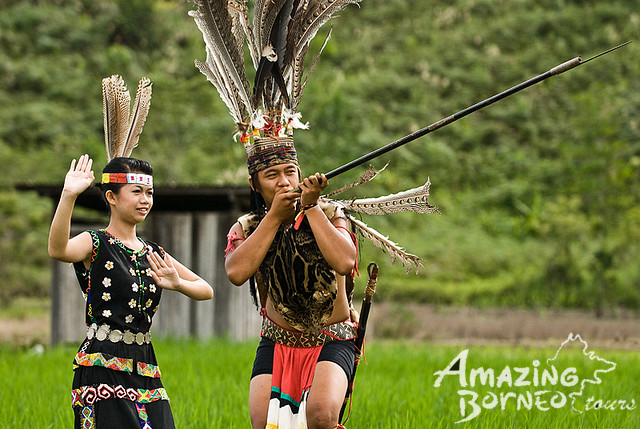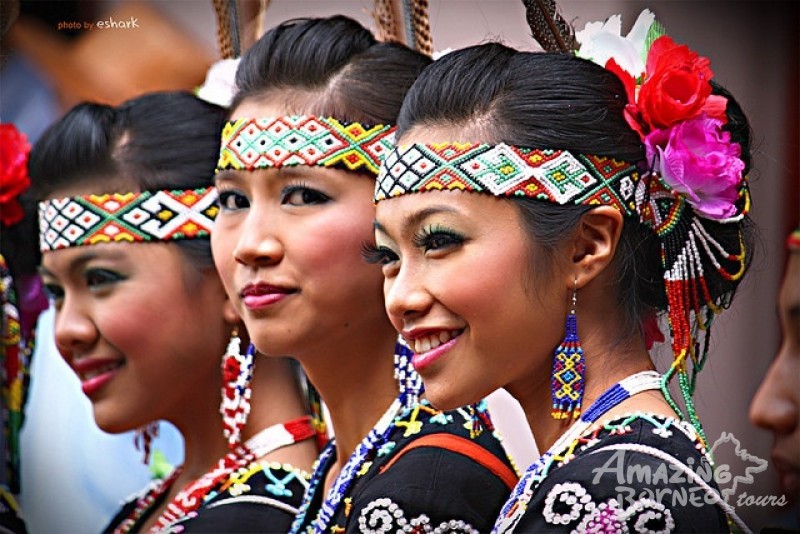
The Timugon Murut people reside in a small, well-defined area in the Tenom Valley. Spanning about 20 miles from north to south, over half of the Timugon villages are situated on the western side of the Pegalan River, which runs south in the valley and some villages on its eastern banks. The remaining population live on the eastern side of the Padas River, which flows from the south.
The Timugon’s linguistic and ethnic links with other related groups spread southwest and south, to the neighbouring Malaysian state of Sarawak and over to Kalimantan, the Indonesian side of the island of Borneo.
The origin of this tribe has been linked to the legend of a man who was the sole survivor of a dreadful flood. A supernatural creature from the cosmic regions then approached him. She was a horrendous-looking woman covered in ringworm. She asked the man to marry her as there were no other survivors.
Naturally, the man was repulsed by her appearance and refused. Instead, he decided to make a woman out of clay. The clay figurine came to life after he spat betel nut juice on it. They married and it is believed their descendants inhabited the river valley of Tenom, becoming the ancestors of the present people have to die; it is because their female ancestor was made of earth.
Like many other ethnic groups, the Timugon Murut community has special religious and spiritual ceremonies. The magilong is a diagnostic ritual performed to determine the cause of a minor illness or misfortune, such as theft. Another interesting ritual is the barasik ceremony. As gong music is played, the pries or priestess chants and use magic stones called putia to ‘see’ the cause of troubles.
Reference: “Some Aspects of Timugon Worldview’, by Kelo Brewis
Sabah Society Journal (1993)

